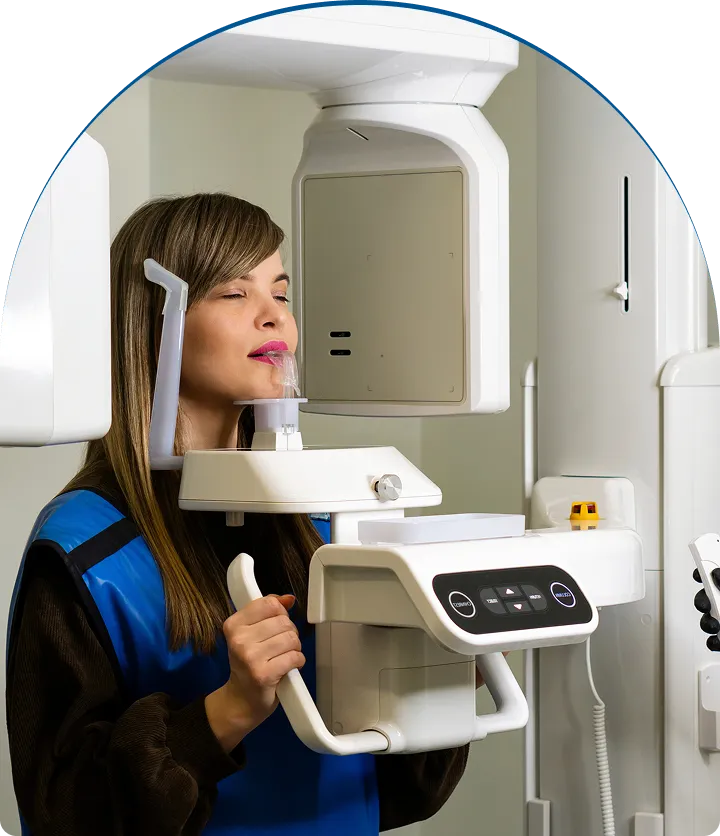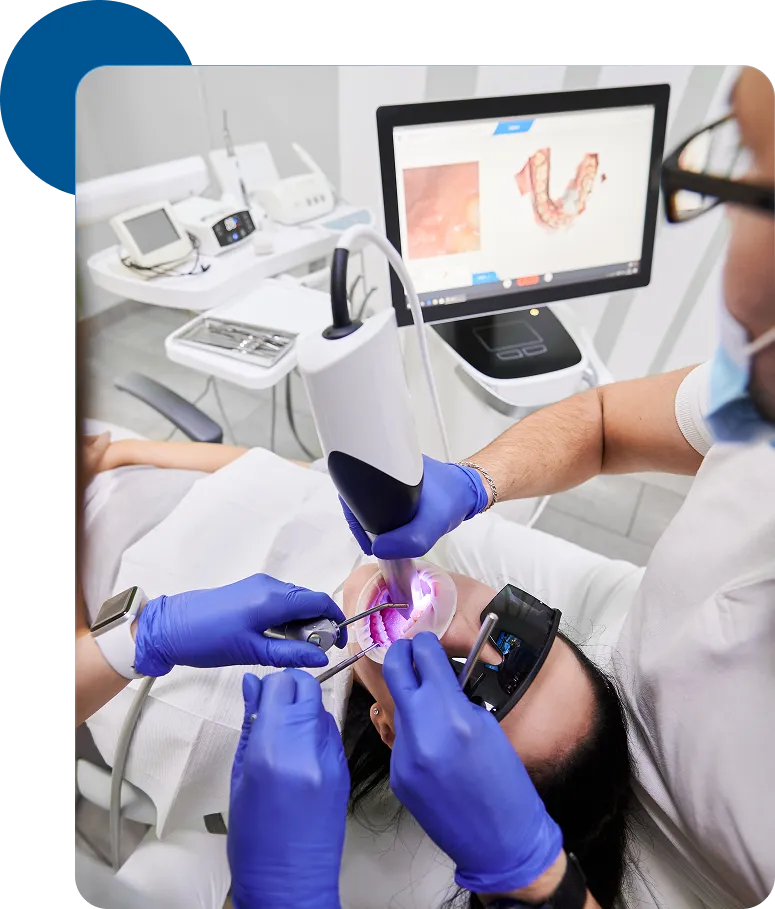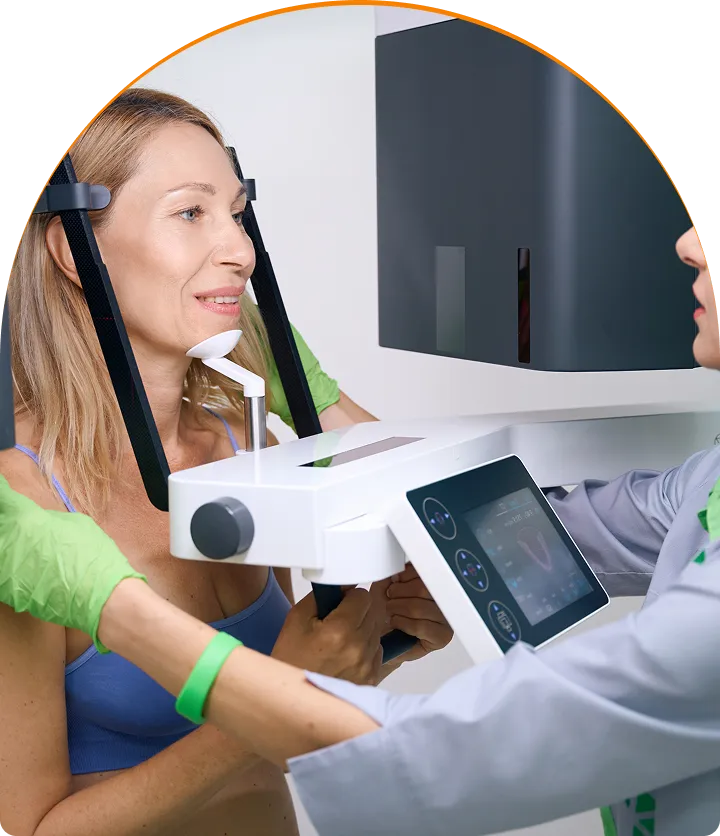3D Imaging
3D dental imaging represents a significant advancement in traditional dental imaging by adding an extra dimension. Dentists now can capture 3D X-rays, which provide a nearly limitless range of perspectives and incredibly detailed views of the structures in your mouth, face, and head. Whether you're at the beginning of treatment or assessing the outcomes of a procedure, 3D imaging serves as an invaluable tool for your dental health.
In contrast to conventional X-rays, the 3D imaging system can generate 2D and 3D images and includes scans of bones, teeth and soft tissues. Dentists can zoom in on the scan, rotate it, observe it from various angles, and even examine scans at different depths. This technology enables visualization of your teeth, roots, gums, bones, nerves, and airways while revealing the interrelationships among
these structures.








